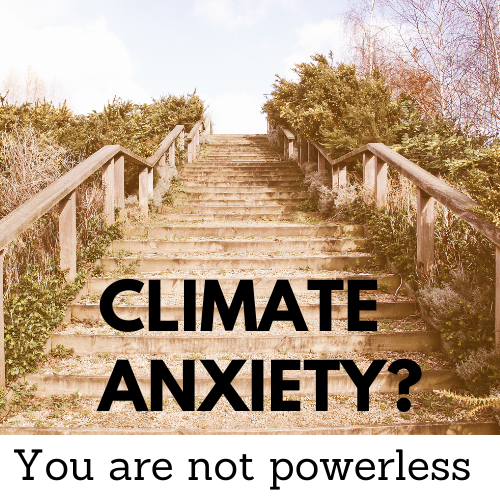
You may have seen countries or companies aiming to be carbon neutral by a specific year. Many companies like to point out that their shipping is carbon neutral. Maybe you are looking to make your household carbon neutral. What does this all mean and how is it good for the planet?
Scientists have found that due to human activities the earth is heating much faster than it should be. According to NASA, the earth heating up effects warming oceans, shrinking ice sheets, glacial retreats, decreased snow cover, rising sea levels, extreme weather events, ocean acidification, and more. We are impacting our planet in harmful ways and we should take responsibility for it.
How is carbon connected to global warming?
Carbon plays an important role in our environment as shown below in this diagram of the carbon cycle. But like most things, too much of it can cause issues, serious issues in this case.

Many of us learned about greenhouse gases in school. These gases trap some heat exiting our atmosphere and help keep our planet toasty enough for us and other living creatures to life here. However, there is a balance that needs to be kept, too much carbon in the atmosphere adds to those greenhouse gases, which tips the scale and starts to make it too warm.
The Earth only needed a light-weight comforter to wrap itself in and all of a sudden it has 2 wool blankets. To keep up this embarrassing metaphor, the Earth is now sticking a leg out from under the blanets because it is too hot!
What adds carbon to our atmosphere?
Common practices that release carbon into our environment include:
- Burning fossil fuels
- The main types of fossil fuels include natural gas, petroleum, and coal. One of the main components is carbon. All of these fossil fuels are combustible, when this happens, it produces heat. This is why we use it, as an energy source. The left over carbon is then released into the atmosphere. We do this in a number of ways from powering factories, to producing energy for electricity, to most forms of transportation.
- Industrial Agriculture
- Industrial Agriculture is the most common type of farming currently. The main way it affects the carbon in our atmosphere is through tilling and lack of cover crops. Tilling is used to prepare the ground for crop which removes any plant residue and often leads to soil erosion. Lack of cover crops hinder the lands ability to take in carbon out of the air and use that carbon to assist in nourishing the soil. If this interests you, I highly recommend checking out Gabe Brown’s book Dirt to Soil or the Netflix documentary, Kiss the Ground.
What does Carbon Neutral mean?
Carbon neutral is the act of offsetting carbon emissions by contributing to solutions that help lower carbon levels in our atmosphere. An example would be a company donating to renewable energy projects to help balance out their carbon emissions from shipping products to customers. The renewable energy will help cut down the need to burn fossil fuels, meaning less carbon will go into the air.
What is considered a carbon offset?
Carbon offsetting is any practice that will help reduce carbon in the atmosphere. This can be done by pulling carbon out of the atmosphere or providing solutions that swap out practices that are carbon producing.
Here are common types of carbon offsets as described by carbonfund.org
- Energy Efficiency – Take common practices that require energy and make them use less energy overall, requiring less fossil fuel based energy or renewable energy.
- Forestry – Protect current forests and soils. Rebuild old forests.
- Renewable Energy – Funds renewable energy solutions in many countries.
3 Steps involved with going carbon neutral?
1. Measure the amount of carbon emissions you produce.
There are great resources that can help anyone measure the amount of carbon they create. Typically, this is calculated on how much carbon you put into the air within a given year.
Here are some resources that can help identify your carbon emissions.
- EPA Personal Calculator
- CarbonFund.org Business Calculator
- Terrapass.org Personal and Business Calculators
2. Take action to reduce those carbon emissions based on what you find.
Many of the calculators will help you identify where you produce the most carbon emissions. You can use this information to focus on areas that cause the biggest impact. It is important to point out that many individuals do not have the ability to lower their emissions in certain ways. That is okay, do what is within your means if you can.
Examples of acts to lower carbon emissions:
- Choose renewable energy providers
- Take less flights
- Perform online meetings or phone calls instead of in person meetings
- Walk or ride bike
- Add insulation in buildings for better heating
3. Participate in carbon offset programs to cover the amount of carbon you are responsible for.
When you have done all you can in lowering your emissions, remeasure your carbon emissions. You can then participate in programs with a donation to offset your carbon footprint. I will again reiterate that is not an option for everyone. Do what is within your means!
One company that has been high recommended is Carbonfund.org
Is carbon neutrality the answer to climate change?
If going carbon neutral strictly means donating to offset your carbon emissions, then carbon neutrality is not the answer to climate change.
However, like recycling, it bridges an important gap in our current societies and practices. Recycling takes the waste of our current manufacturing processes and turns it into something new. It doesn’t unmake itself from plastic, but allows it to be at least one other thing before ending up in a landfill. It is an imperfect system as most recyclable materials do not get recycled. The goal of companies should not be to recommend recycling, but to come up with solutions that will take away the responsibility from the consumer of needing to recycling anything to begin with. This will not happen overnight, which is why recycling is still important when possible.
Carbon neutrality goal is to offset the current carbon emissions from said individual, family, community, country, or company. This is done though investments in solutions that help lower carbon footprint all over the globe. This does not address the original issue of carbon emissions being put into the air in the first place.
Carbon neutrality is a step above what recycling does as it improves the lives of many with the solutions it creates. Because it does not fix the root problem, I consider it a bandaid and hope that companies aim higher. Especially if all they are doing is participating in carbon neutral donations. We need to stop the excess carbon from getting in the air in the first place.
How can companies participate?
Companies know what they are responsible for by measuring their emissions. Then they need to look for ways to reduce their carbon footprint. From the electricity used to run their daily operations, to travel costs, mining resources from the planet, etc.
They have a much larger impact than individuals and families can have. This is why it is so important for companies to go carbon neutral. Once a company has done what they can to reduce their emissions, they then can participate in programs like Carbonfund.org.
There are certifications that companies can get to prove they are carbon neutral. These can be beneficial if companies are looking for assistance in making the right changes and an official stamp of approval. One example is the Carbon Neutral Protocol, they provide a set of guidelines to help companies make better decisions in terms of carbon emissions.
How can someone participate for themselves or their family?
As I have stated above, donating to offset your carbon emissions is not the only thing you can do. As an individual, I would say it isn’t the most important thing either. Here is a list of other ways you can help our planet become more carbon neutral.
- Vote. Choose leaders that understand the critical point our planet is at to help our country and companies make the right decisions.
- Educate. Educate yourself on the main contributors of carbon. Industrial agriculture and fossil fuels being the leading issues. Where do you think our focus should lie?
- Consume less. If you live in the United States, then you have seen the marketing of needing and wanting more. Reflect on what makes you happy. Consumer goods take energy to create, most of which is at the cost of fossil fuels.I dive into this more in detail in my article, Reduce, Reuse, Recycle Revisited.
- Vote with your dollar. Choose companies who are taking steps in the right direction. Less packaging, carbon neutral, take-back programs, etc. Choosing to do the right thing is often a large hurdle for companies. Show them your appreciation by choosing their products over other companies. I encourage you to check out my article, Vote with your Dollar: An Environmental Perspective.
- Participate in Carbon Offset Programs. If you are interested in participating, I encourage you to do the emission calculator, reduce your carbon emissions, and then if it is within your means, participate in a program like carbonfund.org.
Conclusion
Going carbon neutral is a net positive. It is important to remember that going carbon neutral doesn’t mean just paying off the destructive carbon emissions, but also doing what you can to lower those emissions in the first place. If a sink is overflowing, don’t focus on scooping out of the water, focus on turning off the tap.
There are many ways carbon neutrality benefits our planet and it is a piece to the environmental crisis solution that should not go ignored. Do what you can and continue to educate yourself on what the issues are and what solutions make the most sense.
Be kind to yourself and the planet.
Resources:




